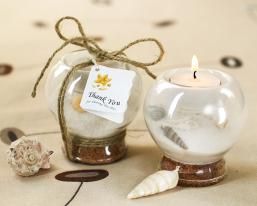
I always carry a camera with me, usually a small point and shoot. However, on a recent trip to Texas I lost my camera case (along with my camera) and now my new camera doesn’t have any protection against my keys, phone and various other things it shares my purse with.
So, I decided to whip up a quick case to keep my camera a little safer. The whole thing took about 15 minutes to make (not counting the first case I made that was too small…errr!).

If you want to make one, you will need two scraps of fabric, fusible batting, some rickrack and a snap or a bit of Velcro.
1. Measure your camera. You will need to cut strips of an outer fabric, lining fabric and batting all the same size. To figure out what size you need, add the length of your camera to the thickness and double this number. Then add 1 1/2” for the flap and 1” for seam allowances. This is the length of your three strips. For the width, add the thickness of your camera to the width plus 1” for seam allowances.
My camera is 2 1/2” wide x 3” long x 3/4” thick so here’s how I figured out how big to cut my fabric:
2(length+thickness) + 2 1/2” = length of fabric
2(3”+3/4”) + 2 1/2” = 10”
thickness + width + 1” = width of fabric
3/4” + 2 1/2” + 1” = 4 1/4”
I wanted my case to be pretty snug but you could certainly make yours looser. I also used 1/4” seam allowances. If you like to use larger seam allowances make sure you add that into your measurements.
2. Okay, enough math. Cut a piece of your lining fabric, outer fabric and fusible batting according to the measurements you figured out in step 1.
3. Iron the outer fabric onto the fusible batting following the directions on the package.

4. Sew the outer piece with the batting to the lining, right sides together. Leave one of the short ends open. Turn the fabric right side out and push out the corners with a pencil eraser (or some other pokey but not sharp object). Press your seams. This will also cause the batting to fuse to the lining fabric. Tuck the edges of the open end under 1/8“ (towards the inside) and press. Top stitch the opening closed as close to the edge as possible.

5. Lay your fabric piece down, outer fabric facing up. Place you camera on the fabric and fold the end up until the camera is covered. This will be the pouch portion of your case. You should still have one side hanging over for the flap. Remove you camera and press the crease.
6. Sew the case side seams right sides together.
7. Cut a piece of rickrack long enough to go around your wrist plus 1/2”. Fold it in half. Lay the ends of the rickrack on one side of the case opening. Stitch it down. Note: I think it would have worked better to angle the loop towards the middle of the flap so it would lay better when the fabric was turned.

8. Pinch the bottom corner of one side of the case and sew across 1/2” from the point. Repeat with the other side. This will give the case a rectangular shaped bottom.


Trim the corners and turn the case. Press your seams.
9. Press the flap down and sew on a small piece of Velcro to keep it closed.

![]()































